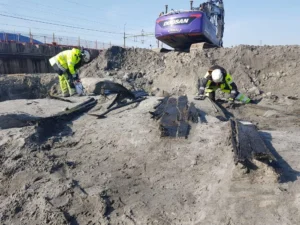Current Affairs 18 July 2025
Current Affairs 18 July 2025. India debates linguistic secularism amid regional tensions, while the Health Ministry issues new workplace guidelines to fight hidden sugar and fat risks.
🏛️ National Affairs
India–Languages
Linguistic harmony shaken by rising identity politics
📝 What You Should Know
India’s linguistic diversity—121 languages and 270 mother tongues per the 2011 Census—is integral to its secular and federal identity. However, recent attacks on non-Marathi speakers in Maharashtra have ignited concerns over linguistic communalism. As The Hindu reports, Indian secularism supports “Sarva Dharma Sambhava”—equal respect for all. This includes language, protected by Articles 29–30 of the Constitution. Article 343 designates Hindi as the Union’s official language, not national language, while states have the autonomy to choose their own. The Eighth Schedule recognizes 22 languages, yet 99 remain outside its purview. Political misuse of language identity, resistance to Hindi in the South and Northeast, and weak institutional response are eroding India’s pluralism. To reverse this, the state must act—promoting multilingual education, inclusive narratives, and stronger oversight via the Commissioner for Linguistic Minorities. Civic responsibility and inclusive policymaking are crucial to preserve India’s linguistic secularism.
📌 Key Takeaway:
- India has no national language; linguistic federalism is constitutionally protected.
- Violence in Maharashtra signals deeper threats to secularism.
- Multilingual education and civic respect are key solutions.
🏥 Health & Wellness
Health–Food
Fat and sugar alert goes up in offices across India
📝 What You Should Know
The Union Health Ministry has issued an advisory for workplaces to display educational boards on the dangers of hidden fats and sugars in food items, as per PIB. This is part of the revamped National Programme for Prevention and Control of Non-Communicable Diseases (NP-NCD). India faces an NCD crisis—obesity, diabetes, and hypertension together account for over 60% of deaths. The initiative aims to shift behavior through subtle nudges. Key actions include encouraging low-fat food options, promoting fruit consumption, and suggesting stair usage over elevators. Offices are urged to become “walk-friendly zones” to integrate movement into work culture. NP-NCD, originally launched in 2010 and expanded in 2023, now covers diseases from diabetes to mental illness. Its delivery is via primary healthcare facilities and digital platforms. This push aims to reduce long-term health costs and create a healthier, more productive workforce. Awareness boards are the first step in shifting India’s food habits.
📌 Key Takeaway:
- Advisory aims to reduce fat/sugar intake at workplaces.
- NP-NCD covers a broad range of diseases under NHM.
- Low-cost interventions can have large public health benefits.
🧑🎓 Employment
India–Jobs
Why India’s youth can’t find jobs despite degrees
📝 What You Should Know
Despite lakhs graduating annually, only 50% of youth are job-ready, says the Economic Survey 2023–24. The India Employment Report 2024 notes 90% of jobs are informal, with declining regular salaried roles. Youth (18–21) form 18–22% of EPFO subscribers, but many face mismatched skills and digital illiteracy—over 75% can’t email attachments. Only 3.7% of India’s workforce has formal vocational training. Gendered disparity is sharp too—urban female youth face 24% unemployment. Rural grads lack digital access, while urban youth lack real-world training. Contractual jobs, automation, and lack of industry-academia links worsen the problem. Yet by 2030, 170 million new jobs are expected globally—mostly skilled ones. The Future of Jobs Report 2025 stresses AI and data literacy. India needs curriculum reform, placement-linked rankings, and a dedicated Indian Education Service to reform education-to-employment pathways.
📌 Key Takeaway:
- High youth unemployment is rooted in poor skill alignment.
- Vocational training and digital literacy must be national priorities.
- Jobs of the future will demand AI, tech, and real-world training.
💰 Economy & Finance
Crypto–India
US passes Stablecoin Act—India’s fintech test begins
📝 What You Should Know
The US just passed the GENIUS Act, allowing stablecoins backed by Treasury Bills, reports Indian Express. This move strengthens the dollar’s global dominance. For India, it’s a wake-up call. A homegrown stablecoin system can help lower ~6% borrowing costs, bring small investors into formal finance, and use UPI-Aadhaar stack for safer digital money. But regulatory delays hold India back. The DEA’s crypto paper is still pending. Without clear rules, Indian developers move to crypto-friendly hubs like Dubai. Financial inclusion and sovereignty are also at stake. If India pegs stablecoins to sovereign bonds, it can stabilise markets and ease debt servicing. UPI has already built trust—this is the next leap. Regulation is key: from digital hawala prevention to startup support and G20 fintech alignment, India must act fast. This is about global leadership, not just currency.
📌 Key Takeaway:
- India can cut costs and boost innovation via stablecoins.
- Regulatory delays push crypto talent abroad.
- Pegging to govt bonds can build trust and fiscal strength.
📉 Economy & Industry
India–Investment
Private investment slows despite strong policy push
📝 What You Should Know
India’s private investment is lagging, despite policy efforts like corporate tax cuts and capex hikes, reports The Hindu. As of June 2025, industrial production grew just 1.2%—a 9-month low. Inflation at ~4.9% and weak demand are deterring fresh capital expenditure. Gross Fixed Capital Formation (GFCF) in machinery rose only 35% in four years, while job creation lags behind corporate profits. The bond market remains undercapitalized—India’s bond market stands at ~$2.7 trillion, far behind the US ($51 trillion). FDI also fell by 35% between FY23 and FY24. Despite 3.1% of GDP allocated to public capex, delays, import-dependence, and job-light projects weaken impact. Firms are cautious, even with low interest rates. To revive private investment, India must reduce project delays, promote domestic procurement, rationalize GST, and offer bond market incentives. DBT and rural income boosts could help trigger demand-led recovery.
📌 Key Takeaway:
- Weak demand and policy gaps deter private investment.
- Bond market reform and rural demand push are vital.
- Capex alone won’t work—structural reforms are needed.
🌍 Environment
Climate–Finance
India needs ₹125 lakh crore for green goals by 2030
📝 What You Should Know
India needs $1.5 trillion (~₹125 lakh crore) by 2030 to meet its climate goals, says Deloitte’s The Climate Response. This includes $250 bn for non-fossil capacity, $300 bn for energy storage. But the global climate finance system is skewed—90% of flows go to mitigation, while adaptation gets just 3.4%. Also, 69% of climate finance comes via debt, hurting poor nations. For India, issues like urban bias, slow fund access, and divergent policy frameworks hinder green financing. National efforts include the National Clean Energy Fund (coal cess-backed), Green Sovereign Bonds (since Budget 2022), and NABARD’s 2030 green strategy. India also taps multilateral funds like GCF, but more needs to be done. Experts suggest setting up a unified National Climate Fund, like Brazil’s Amazon Fund, and encouraging debt-for-climate swaps. A Just Energy Transition Partnership (JETP)-style model could attract concessional funds for India’s coal shift.
📌 Key Takeaway:
- India’s climate finance needs demand multi-source innovation.
- Global flows favour mitigation over adaptation.
- Domestic green fund and concessional finance are key steps.
🚢 Environment – Air Pollution
Shipping–Emissions
Global shipping to go green—India joins the mission
📝 What You Should Know
Global shipping emits 3% of greenhouse gases, but the sector is steering toward net-zero by 2050 under IMO goals—20% cut by 2030, 70% by 2040. Ships are shifting to green fuels—ammonia, methanol, hydrogen—and adopting electric propulsion, AI-aided route optimization, and drag-reducing hull designs. In India, the “Harit Sagar” green port guidelines, the National Green Hydrogen Mission, and the Coastal Shipping Bill 2024 aim to green maritime logistics. India targets net-zero in shipping by 2070. But challenges loom—green fuels are expensive, ports lack bunkering infrastructure, and global regulations remain fragmented. Industry fears cost hikes and tech unreliability. To succeed, India must build alternative fuel infrastructure, incentivise green vessels via subsidies or tax breaks, and develop public-private partnerships. Global cooperation is also essential to set uniform norms and establish green shipping corridors.
📌 Key Takeaway:
- India targets net-zero shipping emissions by 2070.
- Green fuels, hybrid ships, and AI tools are vital solutions.
- Ports need upgrades for fuel and electrification infrastructure.
🏛️ History & Culture
India–Languages
Language pride must not turn into language violence
📝 What You Should Know
India’s linguistic diversity—121 languages and 270 mother tongues (2011 Census)—is a core part of its secular identity. But recent violence in Maharashtra against non-Marathi speakers reflects a rise in linguistic chauvinism, warns The Hindu. Indian secularism, unlike Western models, means equal respect for all religions and communities—including languages. Article 343 designates Hindi as the official, not national, language. States can choose their own official languages, reinforcing India’s linguistic federalism. Article 29 protects the right to conserve languages and cultures, especially of minorities. Yet, 99 languages still remain outside the Eighth Schedule. Political misuse of language identity undermines India’s unity. Tamil Nadu and Northeast states resist Hindi imposition to preserve autonomy. Experts urge inclusive policies—like multilingual education and civic dialogue—to curb language-based discrimination. Political parties must avoid divisive rhetoric and support frameworks that celebrate India’s linguistic pluralism.
📌 Key Takeaway:
- India’s secularism includes linguistic equality, not dominance.
- States have the right to their own official languages.
- Policy, politics, and citizens must protect linguistic harmony.
🏆 Awards & Recognition
Swachh–India
Indore tops again in Swachh Survekshan 2025 Awards
📝 What You Should Know
President Droupadi Murmu conferred the Swachh Survekshan 2024–25 Awards, as per PIB. Indore topped for the 8th time in cities above 10 lakh population, followed by Surat and Navi Mumbai. Among 3–10 lakh cities, Noida ranked 1st, with Chandigarh and Mysuru next. New “Swachh Shahar” awards recognised emerging clean cities—Ahmedabad, Bhopal, and Lucknow led in the 10+ lakh group. Prayagraj was named Best Ganga Town; Secunderabad won Best Cantonment Board. MoHUA also launched two big initiatives:
- Swachh City Partnership: Top 78 cities will mentor lagging peers.
- Accelerated Dumpsite Remediation: A 1-year mission starting 15 August 2025 will clear legacy dumpsites and reclaim urban land.
The survey covered 4,589 cities—up from just 73 in 2016—showing growing urban engagement in waste management, civic pride, and public health.
📌 Key Takeaway:
- Indore continues as India’s cleanest large city.
- New mentorship and dumpsite programs aim to scale success.
- Citizen involvement remains central to Swachh Bharat Mission.
🧪 In News – Tech & Energy
ADEETIE–Scheme
₹1,000 crore push to green India’s MSMEs
📝 What You Should Know
The Ministry of Power launched the ADEETIE Scheme—Assistance in Deploying Energy Efficient Technologies in Industries & Establishments—to support MSMEs, reports PIB. With a ₹1,000 crore outlay for FY26–28, it targets 14 energy-intensive sectors like brass, ceramics, textiles, pharma, and food processing. MSMEs can avail of interest subvention: 5% for Micro & Small and 3% for Medium enterprises. ADEETIE offers full technical support, including energy audits, tech identification, and post-installation verification. The Bureau of Energy Efficiency (BEE) will implement it in 60 clusters in Phase I. Entities must demonstrate at least 10% energy savings to qualify. Benefits include reduced operating costs (30–50% energy savings), emissions cuts, and improved competitiveness. It also aligns with India’s net-zero and green transition goals, and boosts innovation in clean technologies.
📌 Key Takeaway:
- ADEETIE supports MSMEs in adopting clean, efficient tech.
- Offers interest rebates, audits, and full implementation help.
- Aims to green India’s industrial backbone and cut emissions.
🗓️ Important Days & Observances
World Emoji Day – 17 July 2025
This day celebrates the power of visual expression in the digital age. Emojis—once seen as mere add-ons—now play a crucial role in how we communicate emotions, ideas, and cultures. From 😀 to 🧠 to 🌱, they transcend language barriers, making conversations more accessible and nuanced. The day highlights the evolution of digital literacy, especially in a country like India where over 600 million people use smartphones. Emojis are increasingly used in education, mental health awareness, and even brand storytelling. As India’s communication becomes more digital—across governance, classrooms, and rural outreach—tools like emojis show how simple symbols can enrich connection and empathy. While fun, they also raise questions on digital etiquette and the emotional gap in screen-based interactions.
📌 Key Takeaway:
- Emojis shape how we express emotion and identity online.
- They bridge communication gaps in a multilingual society.
- Celebrate digital empathy, but use with cultural awareness.
🧾 Final Key Takeaways
- India must protect linguistic diversity as part of its secular fabric
- Swachh Survekshan 2025: Indore, Noida, and Ahmedabad shine
- ADEETIE Scheme boosts clean energy adoption in MSMEs
- World Emoji Day highlights emotional expression in digital India
Also Read – Current Affairs 17 July 2025
Share this content:















Post Comment